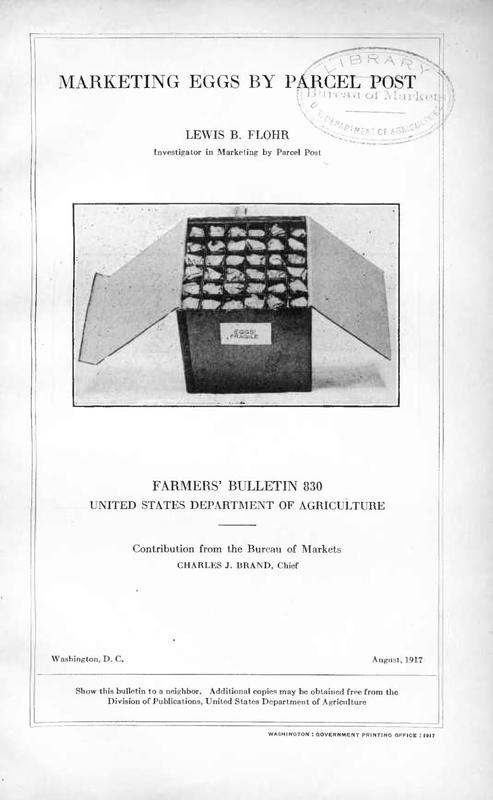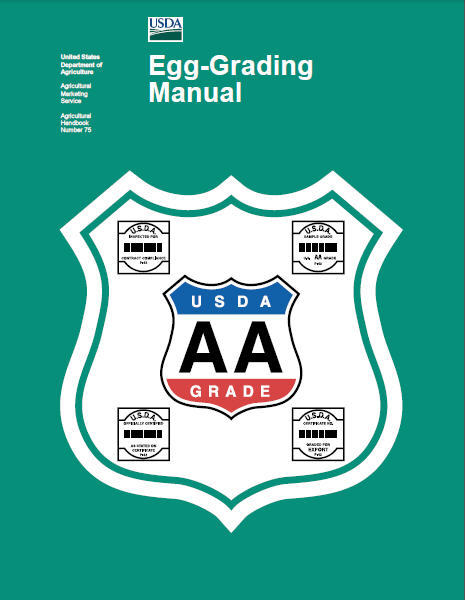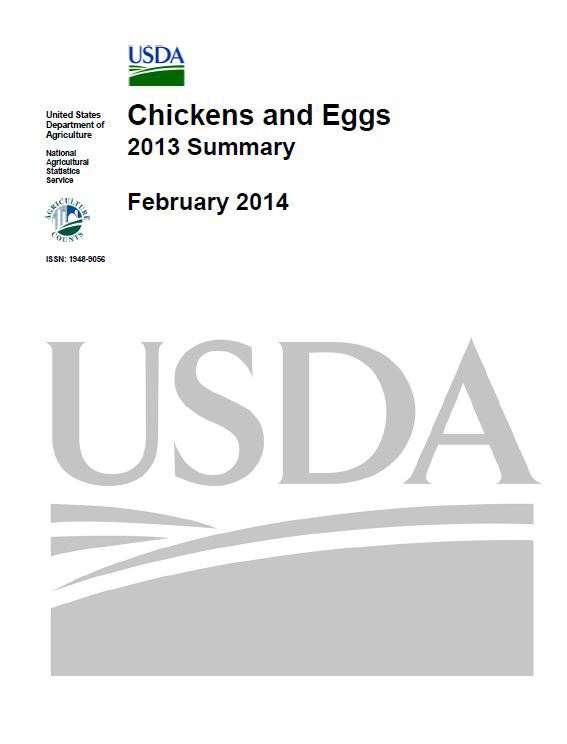USDA Materials on Eggs: Retail and Production
The U.S. Department of Agriculture provides advice to the producer and consumer on egg marketing and purchasing. Here are some reports, manuals, and flyers the USDA has created from the Frost years up to the present:
Marketing Eggs by Parcel Post
Flohr, Lewis. B., 1917
"Whether the marketing of eggs by parcel post should be attempted by any particular producer will depend on his present available markets, the possibility of securing a satisfactory customer or customers, and the care taken to follow tested and approved methods in preparing the eggs for shipment. Failures in attempting to ship eggs by parcel post have resulted because proper precautions as to pack- age or container, packing, and labeling were not observed.
This bulletin presents conclusions from investigations made by the Office of Markets and Rural Organization in cooperation with the Post Office Department and gives detailed information as to the use of the parcel post."
Egg Buying Guides for Consumers
Mainland, Rowena Schmidt and Hauver, William Eugene, 1954
"Are these egg facts NEWS to you?
Eggs are valued for their proteins, vitamins, and minerals, any meal of the day, the year round. Like other important protein foods, eggs should be properly handled to protect their quality. Proper handling means cooling the eggs promptly after they are gathered from the hen's nest, and keeping them under refrigeration until they are to be used."
How to Buy Eggs
U.S. Department of Agriculture. Consumer and Marketing Service, 1968
"Look for the USDA Shield
Select by Grade (Quality)
Select by Size (Weight Classes)"
Egg-Grading Manual
U.S. Department of Agriculture. Agricultural Marketing Service, 2000
"This manual is an aid in teaching both beginning and experienced egg graders the correct interpretation and application of the U.S. standards, grades, and weight classes for eggs. It can serve as a guide in short courses or grading schools when supplemented with lectures, group discussions, and demonstrations. This manual should also prove useful to those teaching or working in the production, processing, and marketing of eggs."
Buy Quality Eggs With Confidence
U.S. Department of Agriculture. Agricultural Marketing Service. Poultry Programs, 2007
"U.S. Quality Standards—Condition of the White and Yolk
U.S. Weight Classes—Minimum Weight Per Dozen Eggs
USDA Shell Egg Certification"
Chickens and Eggs: 2013 Summary
U.S. Department of Agriculture. National Agricultural Statistics Service, 2014
 An official website of the United States government.
An official website of the United States government.







